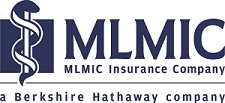Osteopathic EducationDOCTORS OF OSTEOPATHIC MEDICINE
Osteopathic medicine is emerging as one of our nation's fastest growing healthcare professions. And with good reason. Because of their commitment to primary care and prevention, osteopathic physicians (DOs) are becoming the physicians of choice for more and more people. Osteopathic medicine emphasizes the inter-relationship of the body's nerves, muscles, bones and organs. The osteopathic philosophy of treating the whole person is applied to the prevention, diagnosis and treatment of illness, disease and injury.
Osteopathic physicians provide complete medical care to millions of people throughout the United States. DOs are trained in family practice and many receive additional training in specialty areas such as psychiatry, pediatrics, obstetrics, surgery, ophthalmology and cardiology. Preparing for Admission To be considered for admission to any of the nation's osteopathic medical schools, applicants typically have a bachelor's degree, with undergraduate studies that include one year each of English, biological sciences, physics, general chemistry and organic chemistry. Other requirements may include genetics, mathematics, and psychology. Most prospective DO students major in sciences with an emphasis in biology or chemistry; however, applicants may major in any discipline as long as they meet the minimum course and grade requirements. Applicants must also take the Medical College Admissions Test (MCAT). Osteopathic medicine is a people-oriented profession that demands dedicated and empathetic individuals. Prospective osteopathic medical students must exhibit a genuine concern for people. Applicants may wish to spend some time with a D.O. or do volunteer work in a healthcare setting before considering a career in this field. Osteopathic medical colleges require a personal interview to assess an applicant's desire to become an osteopathic physician. For a catalog of requirements and information, contact any of the Colleges of Osteopathic Medicine. The Osteopathic Curriculum The first two years of the osteopathic medical curriculum focus on basic sciences. The third and fourth years emphasize clinical work, with much of the teaching in community hospitals, major medical centers and doctors' offices. During the clinical years, students study general medicine and are involved in research. They rotate through urban, suburban and rural settings, gaining exposure to all areas of medicine. Osteopathic principles and practices, which emphasize the relationship between body systems, are integrated into the four-year curriculum. Students learn osteopathic manipulative treatment for prevention, diagnosis and treatment of disease. Postdoctoral Training & Licensure and Board Certification Following graduation, DOs complete an approved 12-month internship. Interns rotate through hospital departments including internal medicine, family practice and surgery. Many may then choose to complete a residency program in a specialty area, requiring two to six years of additional training. Like all physicians in the US, DOs are licensed to practice medicine by licensing boards in each state. Requirements vary by state. Typically, licensure requires successful completion of a medical licensing exam administered by the state licensing board or acceptance of a certificate issued by the National Board of Osteopathic Medical Examiners upon completion of a rigorous series of exams. The Federation of State Medical Boards provides a directory of state licensing boards that can be contacted for information regarding physician licensure. Board Certification
DOs earn board certification when they achieve expertise in a medical specialty or subspecialty by meeting the requirements of a specialty certifying board. Physicians in the U.S. can become board certified through the American Osteopathic Association (AOA) or the American Board of Medical Specialties (ABMS). The board certification process involves a combination of written, practical and simulator-based tests.
Continuing Medical Education (CME) Continuing Medical Education is a lifetime commitment to learning by osteopathic physicians who recognize that the study of medicine does not end with completion of medical school. CME consists of educational activities which serve to maintain, develop, or increase the knowledge, skills, and professional performance and relationships that a physician uses to provide services for patients, the public, or the profession. For more information on admission to a college of osteopathic medicine, contact: The Central Application Service of the American Association of Colleges of Osteopathic Medicine 5550 Friendship Boulevard, Suite 310 Chevy Chase, MD 20815-7231 Tel (301) 968-4100 Fax (301) 968-4101 |


